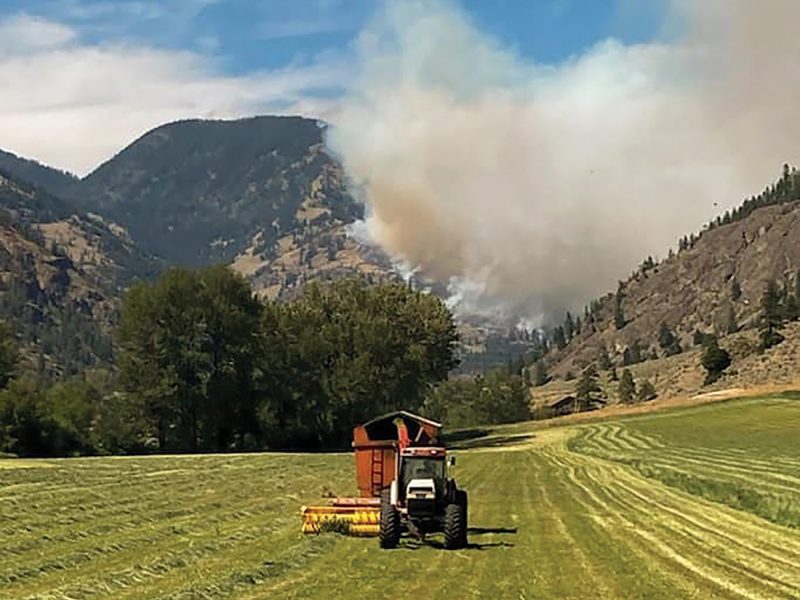PENTICTON – Wildfires in the area between the Okanagan and Similkameen valleys have shaped up as the biggest direct threat to BC ranchers this summer, with many still on edge after last year’s intense, wind-driven fires with lengthy perimeters.
The Keremeos Creek wildfire 21 kilometres southwest of Penticton, the largest blaze in the province outside the Northwest at 17,401 acres, was among 322 fires recorded in the Kamloops fire centre this year.
Kamloops is the most active area for wildfires this season, accounting for more than a quarter of the 1,242 reported fires. Total area burned as of deadline was just short of 97,500 acres – a fraction of the millions of acres burned in recent years.
But for Wade Clifton of Clifton Ranch, located north of Keremeos off Highway 3A, the Keremeos Creek fire was a stark reminder of the danger ranchers face each summer. While the fire kept its distance from his property, it was thanks largely to a backburn crews lit on the Olalla Creek Forest Service Road on August 11.
“We were really nervous about the ash because we thought it was going to come down on us. In the end, it never really got here,” Clifton says.
Concerted efforts to smooth relationships between provincial first-responders and ranchers have improved firefighting efforts, and Clifton praised the BC Wildfire service crews.
“They did a very good job on our end when they got here,” Clifton says of the fire crews in his area.
While a cooler season and higher moisture have helped limit fire risks this year, a more collaborative approach between landowners and BC Wildfire Service crews has also helped incident management teams keep ahead of the fires.
“The teamwork that we’re seeing between the BC Wildfire Service, ranchers, loggers, First Nations – it’s fantastic,” says Norene Parke, rancher liaison manager with the BC Cattlemen’s Association. “We haven’t had near the devastation that we had last year, for sure.”
Rancher liaisons, an initiative that debuted last year, has helped.
The first year of the program saw 13 people tapped to give rancher input to the incident management teams. But liaisons were quickly overwhelmed by the number and intensity of the fires and the sheer volume of cattle and livestock involved.
The rancher liaison for the McKay Creek fire, Parke urged BC Cattlemen’s to have a dedicated manager overseeing the program. A former superintendent for the BC Ambulance Service, she was asked to step into the role. Over the winter, she drafted a manual for rancher liaisons distributed to the 42 individuals tapped to be on standby this year in case of wildfires.
“The rancher liaisons were much better prepared in their role this year,” she says. “This year, there was a clear expectation as to what was going to happen.”
Communications have also improved, thanks in part to an app that allows ranchers and others to quickly report fires as they happen.
“They’re being reported quicker,” Parke says. “The incident management teams have actioned them quickly and they haven’t grown to any size.”
She says many ranchers report that crews are arriving within 15 minutes to extinguish the fires.
The result is that just four rancher liaisons have been activated this year, primarily in the Kamloops fire centre. The exception is for the Connell complex, a 7,000-acre fire in the Kootenays.
While this year’s fires have been less devastating, not all ranchers have been as lucky as the Cliftons. The wildfires south of Penticton have claimed residences and ranch infrastructure, one of three in the region to cause property damage.


 Cattleliner loss mourned
Cattleliner loss mourned